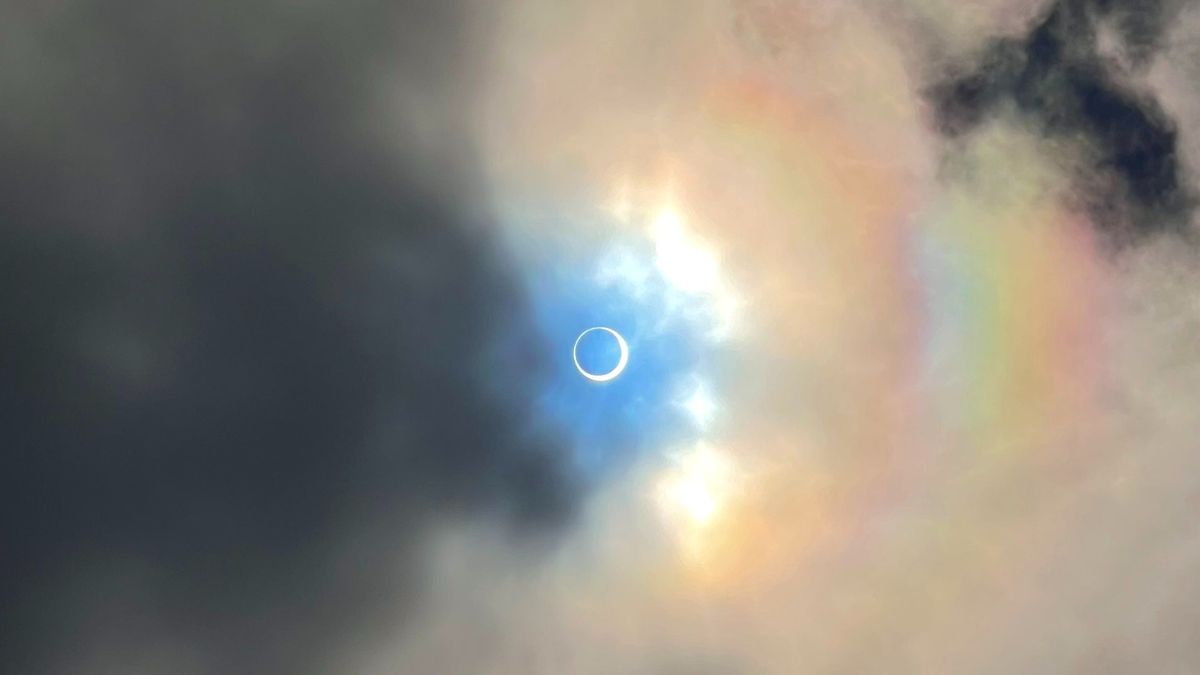
Astrophotographer snaps spectacular view of annular solar eclipse from Easter Island | Travel News
A "ring of fire" illuminated Easter Island in a stunning image of the annular solar eclipse on October 2.
An annular solar eclipse happens when the moon is at its farthest point from Earth, called apogee, as it moves between the Earth and the sun. In this position, the moon appears smaller and cannot completely cover the sun, resulting in a glowing "ring of fire" around it.
The eclipse was visible across parts of the Southern Hemisphere, including Easter Island in the Pacific Ocean, where skywatchers were treated to this remarkable sight, framed by the island's famous moai statues.
Eclipse enthusiasts from around the world traveled to Easter Island, also known as Rapa Nui, to witness the event. One of them, Aditya Madhavan, captured an impressive photo of the moon in front of the sun and shared his experience of getting the perfect shot.
"The shot wasn’t too hard to plan, but the execution was challenging. Before eclipse day, I had no idea what the location looked like, so scouting and setting up all the equipment was tricky," Madhavan told Space.com. He used three cameras: one with a fisheye lens for a wide composite, another attached to a telescope with a white light solar filter, and an astro camera with a solar telescope that filters light at 656.28nm (H-alpha wavelength).
Madhavan’s photo, taken at 2:06 PM local time, used a Lunt H-alpha telescope and was shot from the Rano Kau volcano on Easter Island during the eclipse’s peak, which lasted 5 minutes and 48 seconds, as per TimeandDate.com.

"Every eclipse is a learning experience!" Madhavan said. "Annular eclipses are often easier to photograph than total eclipses because the exposure settings remain the same throughout. Since part of the sun is always visible and dangerous to look at or photograph without a filter, you don’t remove the filter, and the sun's consistent brightness means the exposure doesn’t need adjustment."
Madhavan cautioned that when viewing an annular solar eclipse, it’s essential to use solar eclipse glasses and ensure that cameras, telescopes, and binoculars are equipped with solar filters to protect your eyes and equipment from harmful sunlight.
He also mentioned concerns about clouds blocking his view on Easter Island, which is prone to unpredictable weather due to its location near the tropics.
"Fortunately, the weather worked out, and on the day of the eclipse, we had mostly scattered clouds and some wind gusts," Madhavan said. "Although a few clouds interfered with capturing a complete time-lapse, the annular phase was almost fully visible."
